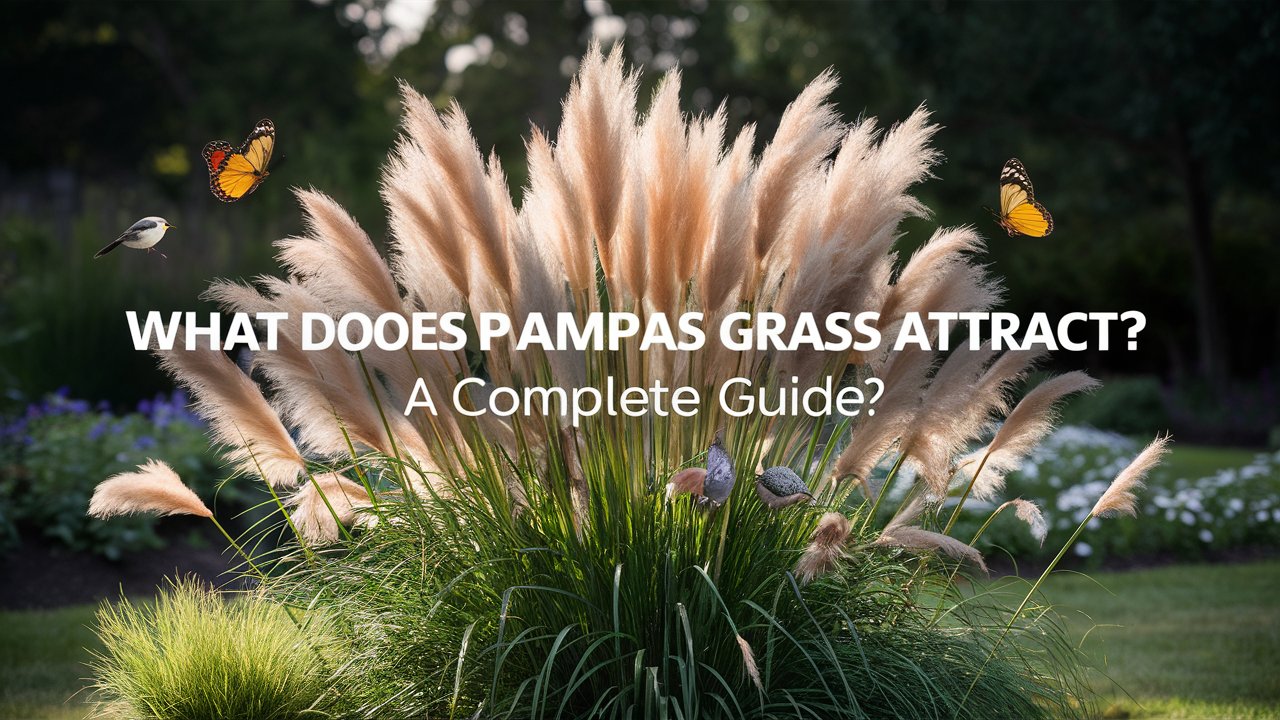Pampas grass, with its tall, feathery plumes and striking appearance, has become a popular ornamental plant in gardens and landscapes. While many are drawn to its beauty, few consider what this majestic grass might attract to their outdoor spaces. Whether you’re a gardener, a wildlife enthusiast, or simply curious about the ecological impact of your plant choices, understanding What Does Pampas Grass Attract? can help you make informed decisions. In this blog post, we’ll explore various questions related to pampas grass and its role in attracting wildlife, insects, and other elements to your garden.
Can Pampas Grass Attract Birds and Other Wildlife to Your Garden?
One of the most appealing aspects of pampas grass is its ability to attract birds. The tall, dense structure provides an excellent shelter and nesting site for small birds, such as sparrows and finches. The seeds produced by the grass can also serve as a food source during certain times of the year. Additionally, the plumes offer protection from predators, making it a safe haven for various species.
Does Pampas Grass Play a Role in Attracting Pollinators Like Bees and Butterflies?
While pampas grass is not a significant nectar source, it does contribute to a pollinator-friendly environment. The tall plumes can create microhabitats that attract bees and butterflies, which are essential for the pollination of nearby flowering plants. By integrating pampas grass into a diverse garden, you can indirectly support the activity of these important pollinators.
What Kinds of Insects Are Commonly Found Near Pampas Grass?
Pampas grass tends to attract a variety of insects, both beneficial and potentially harmful. You may find insects like ladybugs, which feed on pests, as well as aphids that might take up residence in the grass. Spiders are also commonly found in pampas grass, as they use the tall blades to spin webs and capture prey.
Is Pampas Grass Effective in Deterring Pests, or Does It Attract Them?
The impact of pampas grass on pests can be mixed. While it might attract beneficial insects that help control pest populations, it can also harbor pests like aphids, mealybugs, and certain types of moths. However, the dense nature of the grass can deter larger pests, such as rabbits or deer, who may find it difficult to navigate through or unappetizing to eat.
How Does Pampas Grass Influence the Presence of Small Animals in Your Landscape?
Small animals, such as rodents and reptiles, are often drawn to the shelter that pampas grass provides. The thick, dense clumps offer a safe hiding place from predators and harsh weather conditions. However, if you’re trying to avoid attracting these creatures to your garden, it’s essential to be mindful of where you plant pampas grass and how you maintain it.
Can Pampas Grass Attract Unwanted Animals or Pests to Your Property?
While pampas grass can create a welcoming environment for birds and beneficial insects, it can also attract unwanted animals like rodents or snakes. These animals might be attracted to the shelter and safety provided by the grass. Regular maintenance, such as trimming back the grass and removing dead foliage, can help reduce the likelihood of attracting these unwanted guests.
Does the Presence of Pampas Grass Impact the Biodiversity of Your Garden?
Pampas grass can contribute to the overall biodiversity of your garden by providing habitats for various species of birds, insects, and small animals. However, its impact on biodiversity will largely depend on the surrounding plant life and ecosystem. In a well-planned garden, pampas grass can enhance biodiversity by adding another layer of habitat and food sources.
What Benefits Does Pampas Grass Offer to the Local Ecosystem in Terms of Attracting Specific Species?
Pampas grass can benefit the local ecosystem by attracting species that might not otherwise find suitable habitats in your garden. Birds, for example, may be drawn to the grass for nesting and shelter, while certain insects might be attracted to the dense foliage. By incorporating pampas grass into your garden, you can support local wildlife and contribute to a more vibrant ecosystem.
Are There Any Myths or Misconceptions About What Pampas Grass Attracts?
A common misconception is that pampas grass is only ornamental and does not contribute to the ecosystem. However, as we’ve seen, pampas grass can attract a variety of wildlife and insects, both beneficial and otherwise. Another myth is that it always attracts pests, but this depends largely on how the plant is maintained and the overall environment in which it is planted.
How Can You Use Pampas Grass Strategically to Attract Desirable Wildlife While Keeping Pests at Bay?
To maximize the benefits of pampas grass while minimizing potential drawbacks, consider its placement in your garden. Plant it in areas where you want to attract birds or provide shelter for beneficial insects. Regularly trim and care for the grass to prevent it from becoming a refuge for pests. Pair it with other plants that attract pollinators to create a balanced and thriving garden ecosystem.
FAQs
Q: Is pampas grass invasive?
A: Pampas grass can be invasive in some regions, spreading rapidly and outcompeting native plants. Always check with local guidelines before planting it in your garden.
Q: How often should pampas grass be pruned?
A: Pampas grass should be pruned annually, typically in late winter or early spring, to remove dead foliage and encourage healthy new growth.
Q: Does pampas grass require a lot of maintenance?
A: Pampas grass is relatively low-maintenance, but it does require regular pruning and may need to be divided every few years to prevent overcrowding.
Q: Can pampas grass be grown in containers?
A: Yes, pampas grass can be grown in large containers, making it a versatile option for smaller spaces or patios.
Q: Is pampas grass safe for pets?
A: While pampas grass is not toxic to pets, the sharp edges of the leaves can cause cuts or irritation, so it’s best to keep pets away from the plant.
Conclusion
Pampas grass is more than just a decorative plant; it plays a significant role in attracting various forms of wildlife to your garden. From birds and insects to small animals, this plant can enhance the biodiversity of your outdoor space while also providing challenges that need to be managed. By understanding what pampas grass attracts, you can make informed decisions that align with your gardening goals and contribute positively to your local ecosystem.


